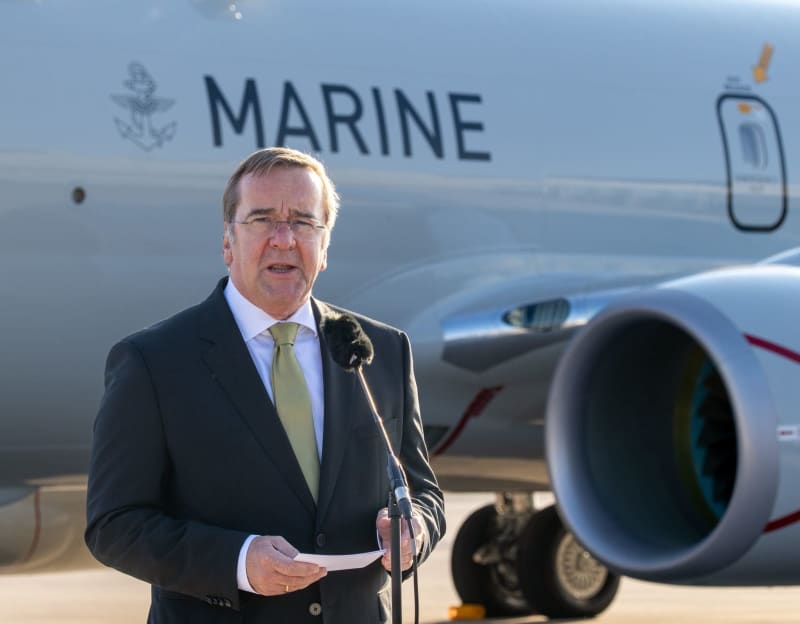
Germany’s Defence Minister Boris Pistorius speaks at the military section of Berlin Brandenburg Airport (BER) in front of the newly arrived Boeing P-8A “Poseidon”, the first maritime patrol aircraft of its class based on a Boeing 737-800. Soeren Stache/dpa
Germany has taken delivery of its first P-8A Poseidon maritime patrol aircraft, a reconnaissance jet capable of tracking and attacking submarines, the Defence Ministry said on Friday.
The aircraft, the first of eight ordered from the United States, landed at Berlin Airport after being flown from the US. Defence Minister Boris Pistorius welcomed the jet and its crew on arrival.
German crews have been training abroad …

Germany’s Defence Minister Boris Pistorius speaks at the military section of Berlin Brandenburg Airport (BER) in front of the newly arrived Boeing P-8A “Poseidon”, the first maritime patrol aircraft of its class based on a Boeing 737-800. Soeren Stache/dpa
Germany has taken delivery of its first P-8A Poseidon maritime patrol aircraft, a reconnaissance jet capable of tracking and attacking submarines, the Defence Ministry said on Friday.
The aircraft, the first of eight ordered from the United States, landed at Berlin Airport after being flown from the US. Defence Minister Boris Pistorius welcomed the jet and its crew on arrival.
German crews have been training abroad for months, Pistorius said, adding that the Bundeswehr aircraft will be able to operate from the bases of NATO partners.
“The German contribution to deterrence in the High North will largely rely on this aircraft,” Pistorius said, meaning the Arctic and North Atlantic regions. The Boeing-made jets are already being used by several NATO countries.
The Poseidon, based on the Boeing 737 airframe, is the largest combat aircraft in the German armed forces, with a length of nearly 40 meters, a top speed of 936 kilometres per hour and a range of 7,000 kilometres, according to the military.
The aircraft can patrol large sea areas, track ship movements and detect submarines using radar as well as acoustic and optical sensors. It can drop sonar buoys and attack submarines with torpedoes or depth charges.
Each crew consists of 11 service members – three pilots, two tactical coordinators and six sensor operators for above - and underwater surveillance.
The Poseidons will be stationed at the German naval airbase near the North Sea town of Cuxhaven. The deliveries are scheduled through 2028.